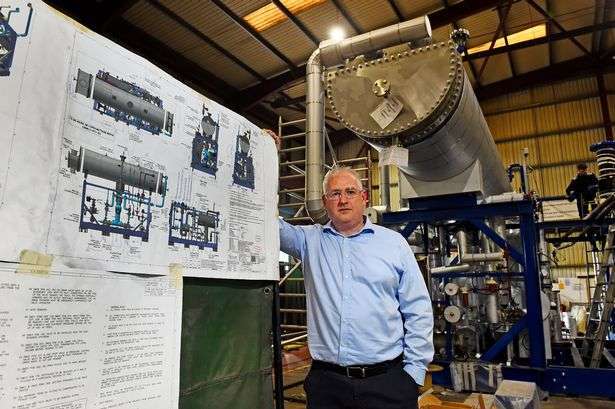Utilising river-powered large-scale heat pumps to warm entire apartment blocks could be a step towards making Scotland’s cities more eco-friendly, according to leading expert Prof Dave Pearson.
Prof Pearson believes that traditional Glasgow tenements, often seen as difficult to heat with typical small heat pumps, could benefit from “district heating” or heat networks.
This method involves using a nearby local power source to deliver heat to entire blocks and neighbourhoods, cutting carbon emissions by up to 95% when used in combination with green energy.
However, Prof Pearson, an engineering expert, a member of the Scottish Government’s energy advisory body, and a visiting professor at Edinburgh Napier University, has voiced concerns about the slow progress made by the governments in Holyrood and Westminster.
The potential for district heating, powered by heat pumps, is vast throughout the UK, but its expansion is currently hindered by a lack of government support and expensive electricity costs on the outdated National Grid, according to the expert.
Despite wind power being substantially cheaper than gas, the price of electricity on the Grid remains linked to the latter. This discrepancy could thwart the potential for renewable alternatives, warns Prof Pearson.
For instance, the Scottish Government could potentially support a local grid that would allow Scottish wind farms to deliver their power directly to city hotspots for district heating.
A recent trip to Star Refrigeration’s base in Glasgow revealed a large river-source heat pump ready for transport to Liverpool to supply eco-friendly heat harnessed from the River Mersey for homes and businesses.
This innovative technology is similar to the company’s groundbreaking project in 2021 that involved setting up Scotland’s largest water source heat pump on the Clyde to service the regenerated Queens Quay in Clydebank, West Dunbartonshire.
Prof Pearson asserts, “The rollout of district heating is the only viable option for heating high-density urban areas where the buildings are too large for individual heat pumps. Large heat pumps are more efficient than smaller ones and can reach the temperatures necessary for heating apartment flats.”
While in theory, this should result in much lower energy bills for residents, significant reforms to the existing “broken” National Grid or direct intervention from the Scottish Government would be necessary, says Prof Pearson.
One proposal involves redirecting cables from large wind farms and targeting them towards cities, creating a “private wire network” for large-scale district heating. For instance, the Whitelees Wind Farm, occurringly situated just nine miles from Glasgow, could be connected to power a large-scale district heating network in Scotland’s largest city.
Similarly, cables from offshore wind farms near the old Cockenzie Power Station site could supply heat to Edinburgh.
He proposes that the Scottish Government should back private companies ready to supply a cost-effective alternative to the National Grid. The government could underwrite the cost of building connections between these companies and potential consumers, resulting in a significantly cheaper heat supply for district heating networks in Dundee, Edinburgh, or Glasgow.
The Holyrood government is currently working on its Heat in Buildings strategy, focusing on reducing emissions from domestic heating. The Scottish Government estimates that heat networks could potentially meet up to 30% of the country’s heat demand.
A spokesperson said, “Heat networks play a significant role in Scotland’s transition to clean heating and achieving Net Zero by 2045. We are exploring possibilities for new duties for public sector buildings concerning heat networks.”
“We are also implementing several measures to increase uptake, such as the creation of the Heat Network Fund and the Heat Networks Support Unit: Resources that public and private sector organisations can use to develop and prepare new or expanded heat network projects for capital investment.”
“The Scottish Government is supporting local authorities with the development of Local Heat and Energy Efficiency Strategies (LHEES), identifying opportunities for heat network developments, providing non-domestic rates relief for heat networks harnessing renewable sources, and legislative requirements for public sector organisations to consider heat networks for their estates.”
“We have repeatedly urged the UK Government to introduce reforms balancing gas and electricity prices, as recommended by the Independent Review of Net Zero and the Climate Change Committee.”
A UK Government spokesperson said it had “already announced improved consumer protection for heat network customers” starting next year. The statement pointed out that they were already working with the industry and local authorities to reform existing heat networks and build new ones, with a total investment of over 500 million pounds since 2019, and a forward plan to rebalance gas and electricity costs to benefit consumers with cheaper and cleaner energy.












